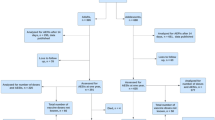Abstract.
An international symposium on the impact of environmental hazards, chemicals and drugs on the developing immune system of children was held in Berlin (Germany) organized by the BgVV. Epidemiological evidence indicates that an immature immune system challenged early in life by bacterial antigens may prevent, to some extent, allergic reactions including asthma bronchiale triggered by environmental pollutants. However, the prevalence for infectious disease is increased in childhood, especially when exposure to contaminants takes place in the period of pregnancy and breast-feeding. The effects of chlorinated biphenyls, dioxin, endotoxins, hexachlorobenzene, and direct and indirect in utero tobacco smoke exposure are examples. All participants recommend comparative and follow-up epidemiological studies and clinical examination of infants and children at risk during upbringing. There is ample evidence from experimental studies that indicates adverse effects on the developing immune system after in utero and postnatal exposure to chemicals and drugs. The adverse reactions of aciclovir, benzodiazepines, hexachlorobenzene, organotins (di-n-octyltin dichloride, tributyltin oxide), pesticides (methoxychlor, heptachlor) and polyhalogenated aromatic hydrocarbons (2,3,7,8-tetrachlorodibenzo-p-dioxin) are presented and reviewed. To determine the predictive value of test data in risk assessment for neonates and children, development, differentiation and maturation of the immune system in humans and laboratory rodents is compared in their pre- and postnatal stages. Considering some differences in immunocompetence at birth and after lactation, and differences in the time frame for maturation of the immune system, reaction types are thought to be common, comparable and similar in human childhood and early adolescence and the postnatal lifetime of laboratory rodents. The participants of the symposium felt strongly that regulatory steps urgently need to be initiated to incorporate some relevant aspects into existing test guidelines for testing developmental immunotoxicity. In this context, it is recommended that animals culled otherwise in one- and two-generation studies be examined for developmental immunotoxicity according to the valid methods and parameters discussed. The majority of participants agreed that a safety factor of 10 is too low in risk assessment and management to protect a sensitive subpopulation of children against man-made environmental pollutants.
Similar content being viewed by others
Author information
Authors and Affiliations
Additional information
Electronic Publication
Rights and permissions
About this article
Cite this article
Richter-Reichhelm, .HB., Althoff, .J., Schulte, .A. et al. Workshop report. Children as a special subpopulation: focus on immunotoxicity. Federal Institute for Health Protection of Consumers and Veterinary Medicine (BgVV), 15–16 November 2001, Berlin, Germany. Arch Toxicol 76, 377–382 (2002). https://doi.org/10.1007/s00204-002-0369-z
Received:
Accepted:
Issue Date:
DOI: https://doi.org/10.1007/s00204-002-0369-z




